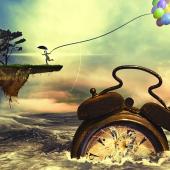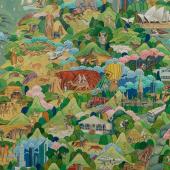Center Paul Klee Berne
The German painter and graphic artist Paul Klee (1879-1940) influenced an entire generation of artists. His artworks are based in between Expressionism, Constructivism and Cubism. For the first time in an exhibition, Paul Klee's relationship he had with the surrealist artists in Paris during the 1920s and 1930s is highlighted.
Paul Klee has often been associated with surrealists. The French surrealists with their central concepts of "dream", "cosmos" and "vision" always saw themselves reflected in the transcendental painting of Paul Klee. Nevertheless, contacts, cooperation and influence have never been looked at in a holistic way so far. The Paul Klee Center in Berne, in close collaboration with the Center Pompidou in Paris, took part in the exhibition and is now throwing the exhibition "Paul Klee and the Surrealists" from November 18th 2016 to March, 12th 2017.
Pleasing to the eye are works by Max Ernst, Joan Mirò, Pablo Picasso, Hans Arp, Alberto Giacometti, Andrè Masson and Salvador Dalì. They were all fascinated by Paul Klee's interwoven image worlds and were inspired to bring their dream worlds, surreal machines, imaginary plants or unreal spaces to the screen. The Spaniard Joan Mirò once said about the image magician: "Klee was the most important encounter in my life. Under his influence, my painting freed itself. "
The exhibition in Berne dedicates eight chapters to this fascination. These include the "psychic automatism" as well as dream, sexuality, masks, the fragmentation of the body or the imaginary nature. In addition, opposites are shown. For example, Klee used his painting to make fun of the surrealists' language. In his drawing "Menu ohne Appetit", he left their biomorphous forms disappearing in a sticky mass in 1934.
Paul Klee is undoubtedly one of the most important artists of classical modernism of the 20th century. Likewise his friend, the Russian painter Wassily Kadinsky, Klee taught at the Bauhaus in Weimar from 1920, and later in Dessau. After the establishment of the National Socialists, he returned to Bern, where, despite the growing burden of a serious illness, an extensive late work arose.



